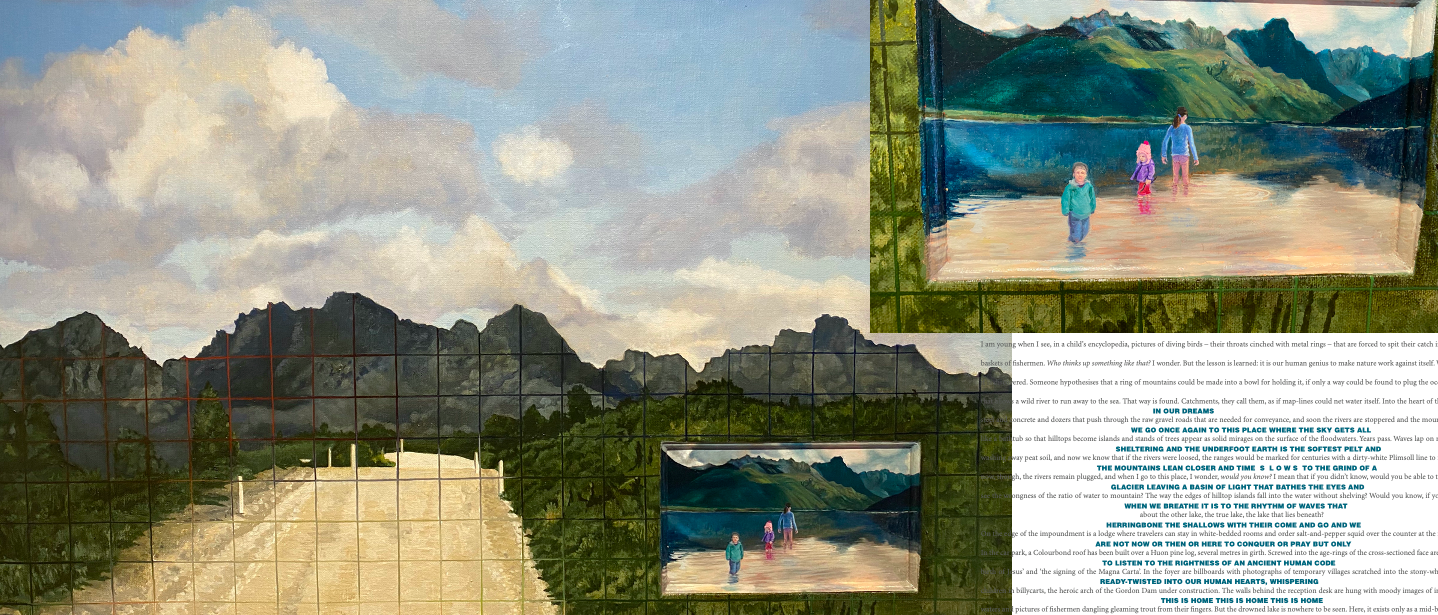7 June 2021
For 'Disappearing', an exhibition that showcased the work of 11 pairings of writers and painters, it was my privilege to work with renowned painter David Keeling.
The brief, for our collaboration, was this:
Disappearing
We’ve long had a secret here.
Disappearing : to cease to be seen; vanish from sight; to cease to exist or be known; pass away; end gradually.
In our islands, their past, the land, seas, the movement of air, its peoples, the cadence of life and in the place itself is something unfathomably beautiful. You sense it as much as see it. It’s about connection and time not the here and now. It’s a secret that has been closely held, cherished, sustaining our soul.
Entwined with that secret has been a hope that one day Tasmania would be recognised, acknowledged and able to stand on its own two feet. This has been elusive but now we are told that perhaps it is so close as to be reckoned by the beads on the accountant’s abacus.
Then again, perhaps not. Is the price we are paying a disappearing, a disappearing of the very stuff that sustains us? Or, is it a more complex story, shedding a skin as part of the inexorable march of renewal?
Disappearing.
It took David and I about five minutes to decide that our response to the brief would be to create work about Lake Pedder, an exquisite lake in southwest Tasmania which disappeared, almost fifty years ago, beneath the floodwaters of a hydro-electric power scheme.
David had never been to the 'enlarged' Lake Pedder. On principle. But he and his partner, the artist Helen Wright, agreed to come with me to the region.
As we drove, we talked, and soon settled on an idea: we would respond to the 'lake within a lake' by creating artworks within artworks. For David, this meant a small scene - of the original Lake Pedder – within a representation of the altered, present-day landscape. For me, it meant a poem within a work of prose, which you can read here: The Road Back.pdf
Working with David was an entirely joyful experience. He is a brilliant painter, an insightful thinker and a generous collaborator. His work ethic, and his quiet confidence in his own skill, are inspirational.
While I wrote the inner poem first, and waited to tackle the outer work of prose, David completed his outer work, a present-day landscape, and spent time mulling over his approach to the historical inset. In the end, he used that space to homage to an iconic photograph by Olegas Truchanas, in which his three children stand in the shallows of Lake Pedder. But as a symbol of hope for the future, David painted my own three children into the scene in place of the Truchanas children.
Perhaps my children, or their children, will one day walk on the extraordinary pale pink beach that waits under the waters of the impoundment, intact, its sand still imprinted with tyre tracks from the light aircraft that landed in droves during the lake's last summer. All that is required, for the lake to be returned to us, is sufficient political will.
Lake Pedder is one of this island's most tragic disappearances. But, unlike some of the others, it doesn't have to be forever.
Credit: The textual layout of 'The Road Back' is the work of graphic designer Lynda Warner.
